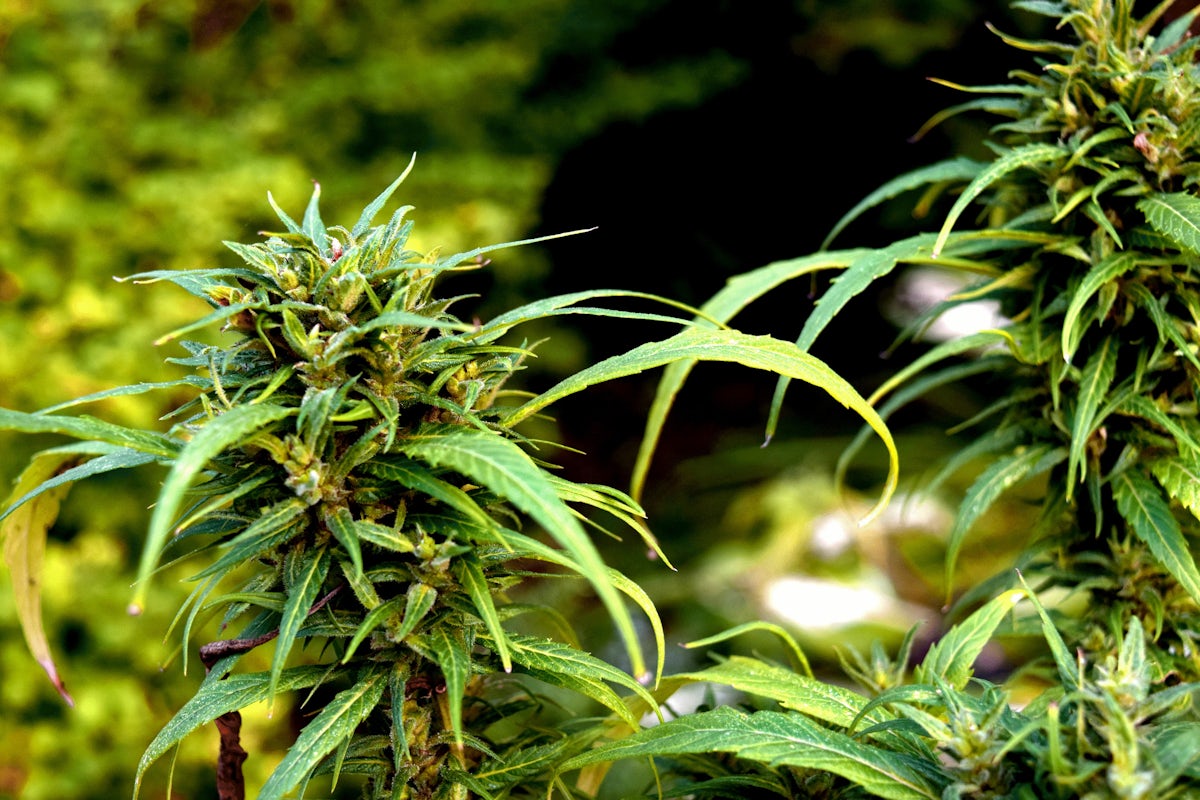The amount of information and the lingo can be overwhelming: you might know that words like THC, cannabis, CBD, indica, and sativa are weed-adjacent, but they may not actually mean anything to you. And beyond that, you want to know what to look for; marijuana is a plant, after all, and there are certain characteristics to be cautious of or on the hunt for to ensure that you’re getting your money’s worth (weed ain’t cheap, y’all). Thankfully, we’ve provided a guide here that not only breaks down the three main “types” of weed, but also some other basics like stem texture and scent. And yes, we even revealed what THC actually stands for—you’re welcome. This is your guide to weed, with all of the important stuff you should be looking for.
Marijuana is the most common illegal drug used in the United States. According to a national survey on drug use and health from 2018, about 43.5 million Americans over the age of 12 used marijuana in the last year.1
As of the 2018 midterm elections, 10 states and Washington, DC had legalized marijuana for recreational use for adults over the age of 21. Over 30 states have laws on the books legalizing marijuana for medical use only, while several others have only legalized oils with low-THC content. Marijuana is still illegal under federal law.
What Does Marijuana Do?

The membranes of certain nerve cells in the brain contain receptors that bind to THC, kicking off a series of cellular reactions that ultimately lead to the high people experience when they use marijuana. People use the drug because it elevates their mood and relaxes them. Depending on the level of THC, users may also experience euphoria, hallucinations, and paranoia.
The most common way to use marijuana is to smoke it. It is often rolled into a cigarette “joint,” added to an emptied cigar casing to create a “blunt,” or smoked in a pipe or a water pipe “bong.”
A newly popular method of use is smoking or eating different forms of THC-rich resins extracted from the marijuana plant. It can also be baked into food (called edibles) such as brownies, cookies, or candy, or brewed as a tea.
So what’s hemp?
Remember a minute ago? Like I said, hemp is cannabis. Here’s the difference: The marketplace, and law enforcement, use words like “marijuana” and “cannabis” to refer to plants bred or naturally high in psychoactive cannabinoids like THC.
You see, marijuana plants can be male or female. The female plants—
Male or female plants?
Botanically speaking, yes, there are male and female plants; we’re in the realm here of basic plant reproductive morphology. The female plants are the ones with THC in them. The male plants don’t produce smokable marijuana; they just produce the seeds to grow more.
These days, the female plants have been grown for their resinous flowers, which are then dried and smoked or cooked into food or made into topical applications.
Male plants with seeds are used for breeding, and “hermaphrodites”—female plants that start “throwing bananas,” or turning male and producing seeds—are often discarded.
The old Mexican term, sinsemella—literally, without seeds—was used to refer to only female marijuana that had been carefully kept that way and harvested, but now everything you see in a dispensary and pretty much anything you’d buy on the street meets that definition.
Hemp. I want to know about hemp.
We’re getting there. When we say “hemp,” in crude terms, we’re talking about cannabis that’s low in psychoactive cannabinoids and specifically raised for the use of its seeds or stalks for food, fiber or fuel. This use of the plant goes back to ancient times; it cultivation by patriotic farmers was encouraged by the U.S. government during World War II—evidence of which grows wild along roadsides in Middle America to this day.
In many circles, hemp is viewed as a miracle plant, and perhaps rightly so. Dr. Bronner’s Soap is derived from hemp. (It’s not for nothing that modern-day Bronners are among the main drivers of legalization.) Hemp is a durable fabric, hemp is high in omega fatty acids and hemp can even be made into fuel that can drive certain combustion engines. Hemp is such a big deal that Jack Herer, one of the first heroes of the modern-day legalization movement, wrote a whole book about it.
So it used to be legal?
All cannabis used to legal—in fact, cannabis was legal for much longer than it wasn’t.
Didn’t it become illegal because it’s bad for you?

If that were the case, tobacco, a pure killer, would be illegal and not a key cash crop. We would be saying “regulate alcohol like marijuana” rather than the other way around.
As for cannabis, it’s illegal because of who used it.
The first laws outlawing the use and possession of “marihuana,” or “Mexican loco-weed” were passed in California in 1912 and directed at the state’s Latino population, just as, at the same time, the state Board of Pharmacy outlawed the opium smoking favored by the Chinese.
As you can deduce, these laws were aimed at marginalizing these two particular minority communities—two communities without whom California would be unrecognizable. Similar “reefer madness” was repeated decades later by original drug czar Harry Anslinger, who spun wild tales of white women smoking “reefer” and suddenly listening to jazz music, hanging out with black men and other racist agitprop.